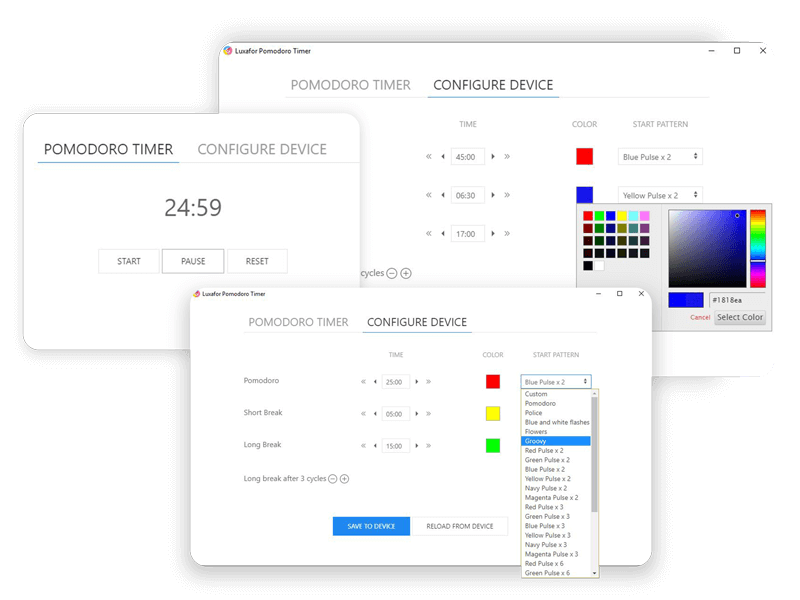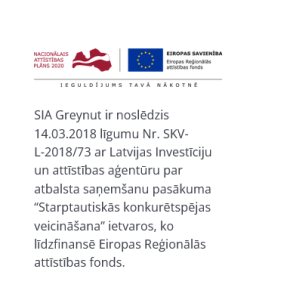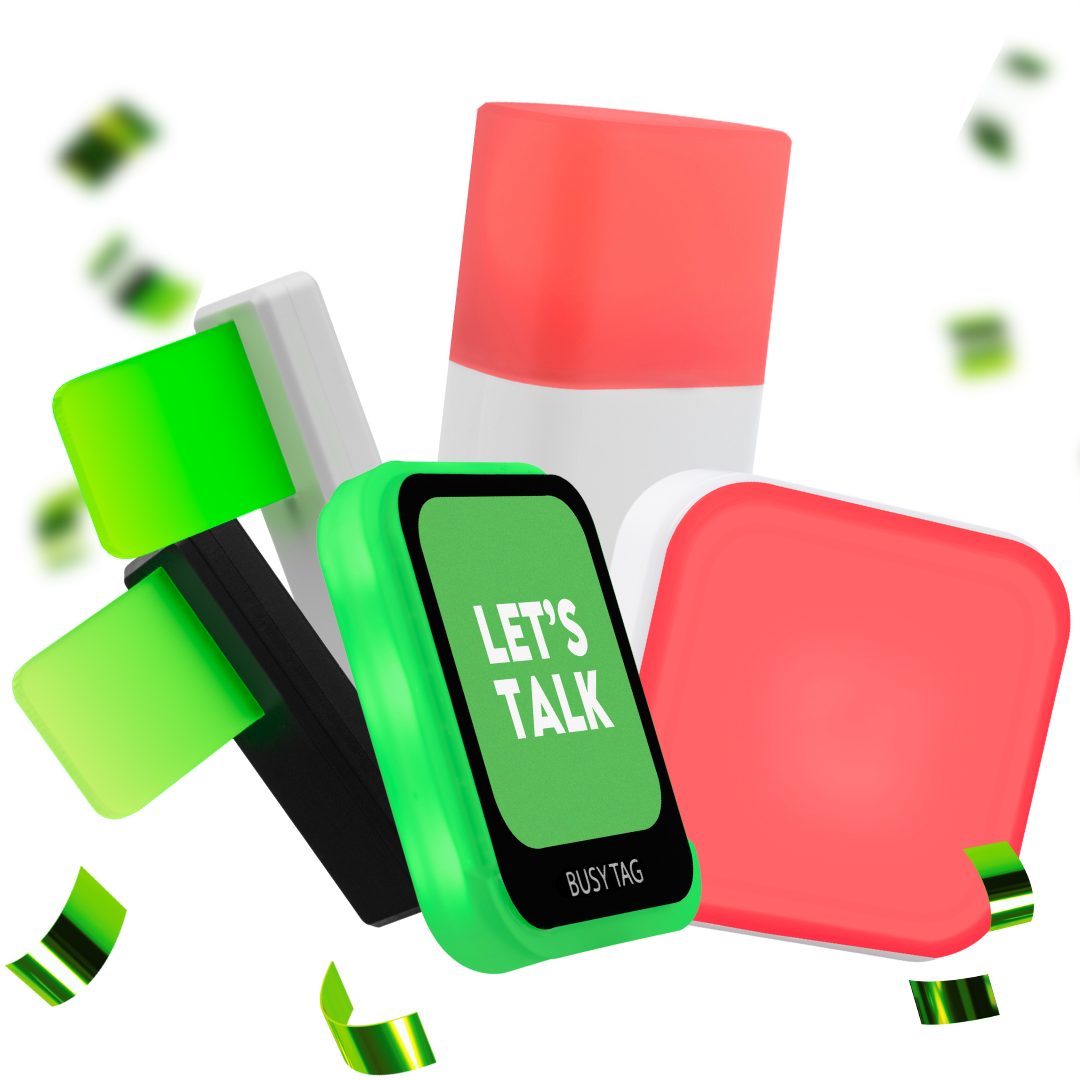11 Stategies & Tools to for Effective Meetings
- Updated on: March 19, 2025
Welcome to Luxafor, your one-stop shop for conquering the ever-elusive realm of productivity. We understand the constant struggle to streamline your workflow, achieve goals, and tame the ever-growing to-do list. Whether you’re a seasoned professional, a student overwhelmed by deadlines, or simply someone seeking to optimize your daily routine, Luxafor is here to empower you.
Luxafor leads the way for productivity gadget manufacturers with a variety of innovative tools to help individuals and businesses boost productivity and achieve their best potential. Luxafor’s smart gadgets are designed to be sleek, practical and easy to integrate into your workspace. By incorporating these productivity tools into your routine, you can create a more focused and productive work environment.
Everybody hates meetings. More often than not, they’re uncontrollably long and don’t do much to arrive at a better conclusion than some work needs to be done. In fact, most meetings turn out unproductive, as executives consider 67% of meetings to be failures. Even with most meetings taking place online, they are nevertheless not the most productive time spent.
It is said that on average, we spend more than 3 months per year in meetings. According to The Muse, middle management spends 35% of their time in meetings. And if you’re upper management, it’s likely to reach even 50%.
Besides, it’s costly. In a study of time budgeting at large corporations, it was found that a single weekly meeting of midlevel managers was costing one organization $15M a year! No wonder most people find holding meetings simply pointless (an outlook that, sadly, doesn’t make them any more productive).
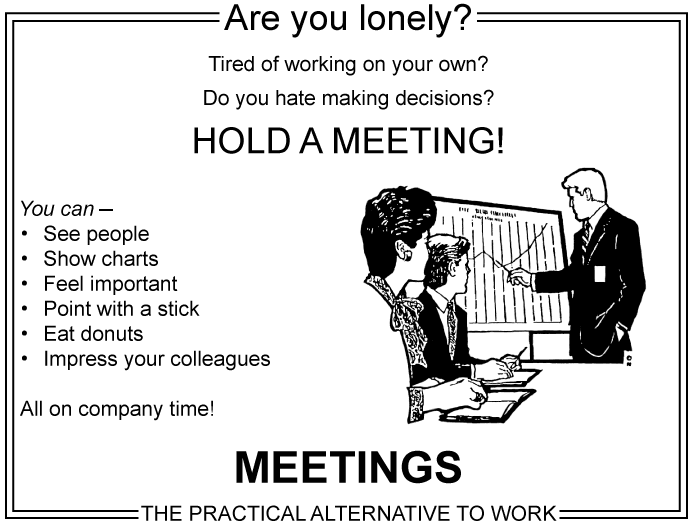
Source: pinterest.com
However, meetings can and should be an effective use of everyone’s time. If done right, they can be extremely efficient in decision-making and getting your team on board with what needs to be done to accomplish your company goals.
Here’s our list of the 11 of the best tools for effective meetings and several strategies that will help you turn your meetings into productive sessions that take up less time and get more done.
11 Apps and Tools You Can Use Right Away to Make Meetings More Effective
1. Calendly for picking a time that works for everyone
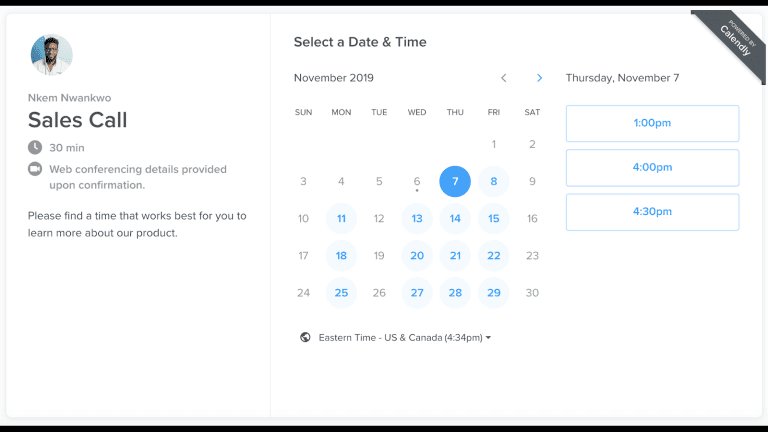
Source: Calendly
A typical challenge of holding meetings is finding a time that suits everyone. Calendly is an online tool that helps individuals, as well as teams, schedule meetings the easy way. You can share the Calendly scheduling links with your teammates or clients, and everyone can pick the time that works best for them.
If it’s a client you’re arranging a meeting with, you can even let them choose between different types of meetings, such as a 10-min briefing via phone or 30-min video call, and choose an available time slot. If anyone from your team can take the call or hold the meeting, then Calendly can assign the meeting request automatically to whoever is available from the group.
What’s awesome is that it also works with your Google, Outlook, Office 365, or iCloud calendar.
2. Team Meeting Checklist for planning a truly productive meeting
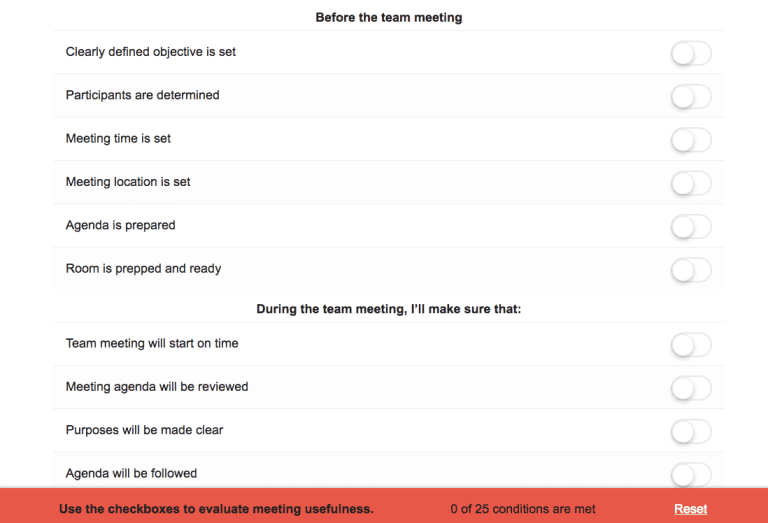
Source: Team Meeting Checklist
A helpful tip for holding a successful meeting is to have a checklist to go through so you can make sure the meeting goes as smoothly as possible. The Team Meeting Checklist lays out the 25 essential conditions of a good meeting, starting with preparations and objectives during a meeting. The checklist also covers what will happen after the meeting, for example, “participants will receive a follow-up within 24 hours” and “unfinished business will be put on the next agenda.”.
Although it might seem like a set of basics that only newbies should learn, very often even experienced meeting organizers meet these objectives. A clear and easy-to-follow outline is very helpful for the organizer as well as the chairman, and the checklist also helps to set clear expectations for attendees.
3. HBR Meeting Cost Calculator for calculating a meeting’s ROI
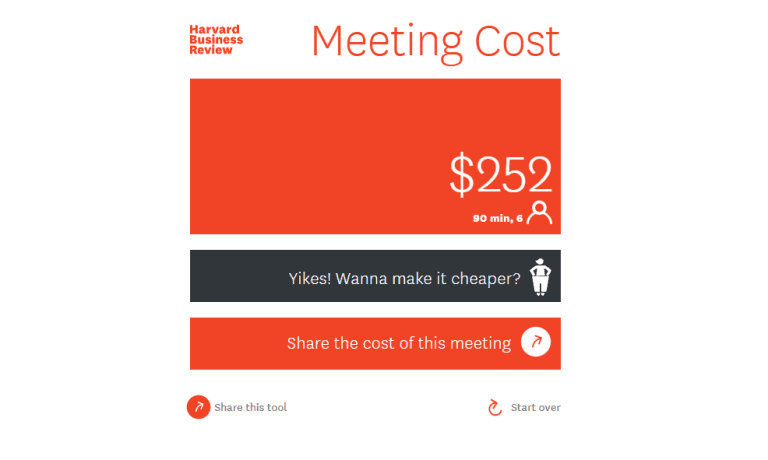
Source: Meeting Cost Calculator
To meet or not to meet? Whenever you’re questioning whether a meeting is worth your while, try Meeting Cost Calculator by Harvard Business Review. Based on a pretty simple formula, it lets you see how much your business is spending on a single meeting, and how much you could be saving. In the browser or app, simply enter the length of the meeting, a number of attendees and their salary approximates to calculate the true cost of these corporate get-togethers.
Though it’s only an estimate, it makes a valid point that time is money. Next time someone suggests calling a meeting, use this handy tool to help you figure out whether it’s money well spent or a waste of everyone’s time.
4. Less Meeting for visualizing agenda timeframes
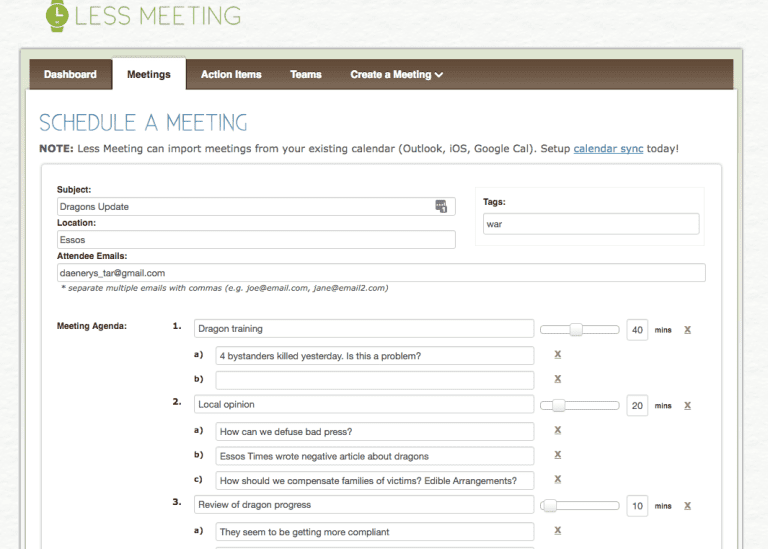
Source: Less Meeting
Probably one of the most common reasons why meetings go out of hand is the inability to stick to the agenda. Less Meeting helps to hold truly productive meetings by visualizing the timeframe of a meeting.
Before the meeting, the organizer sets an overall time limit, along with set times for each item on the agenda. During the meeting, a countdown timer at the bottom of the agenda shows how many minutes you have left. It’ll turn yellow when there are five minutes on the clock. If you go over, it’ll turn red. Agenda items also turn yellow when there’s a minute left, encouraging you to wrap up the discussion and carry on.
What’s also awesome about it is that you can add documents and images, action items, meeting goals, links to previous agendas, and even sync your tasks with popular to-do apps.
5. Fellow for a truly collaborative meeting agenda

Source: Fellow
The meeting agenda is one of the key things that make a meeting effective. Even a simple meeting agenda must be well thought out. It’s important to know beforehand the main objective of the meeting, is the meeting more about brainstorming or making a decision, who makes the decision, etc.
Fellow’s online meeting agenda feature is collaborative and inclusive, enabling everyone on the team to contribute to the agenda and be a part of the discussion. Create a shared meeting agenda and encourage everyone to add talking points, assign action items to specific meeting attendees and keep everyone accountable by following up on previously assigned tasks.
A very useful feature is templates (choose preset or create your own) that make the process of making and following agendas a lot easier.
6. Miro for next-level collaborative mind mapping
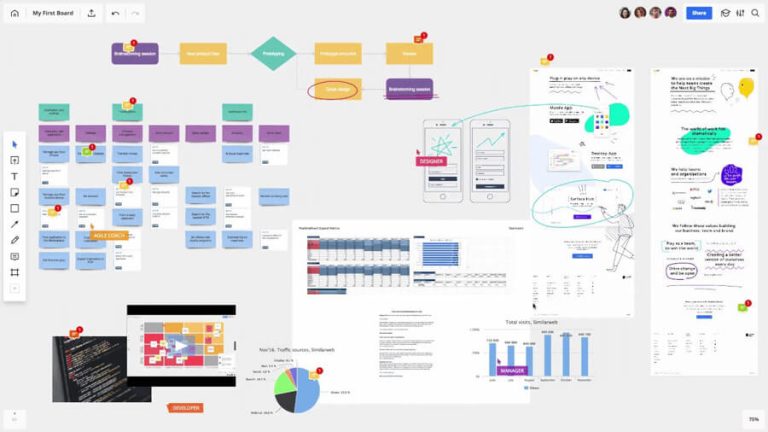
Source: Miro
Flowcharts and scribbles are a timeless classic of meetings, but they either had to be created beforehand or on the spot by someone who insistently claims they can’t draw. Miro solves the problem with a super flexible online mind-mapping tool that lets you visualize and organize ideas on the spot – together!
The workspace is boundless and features an easy-breezy way of drawing shapes and using connectors, as well as adding sticky notes, files, and images. Start from scratch or use a ready-made template, and have your meeting attendees collaborate on mind mapping in real time!
The best thing about it is the seamless integration with so many popular services – like Dropbox, Microsoft Teams, Google, Trello, Slack, and more. For example, a Google Docs file can be viewed and edited on the spot which really comes in handy whenever you need to capture and organize ideas right away.
7. Minutes.io for taking minutes
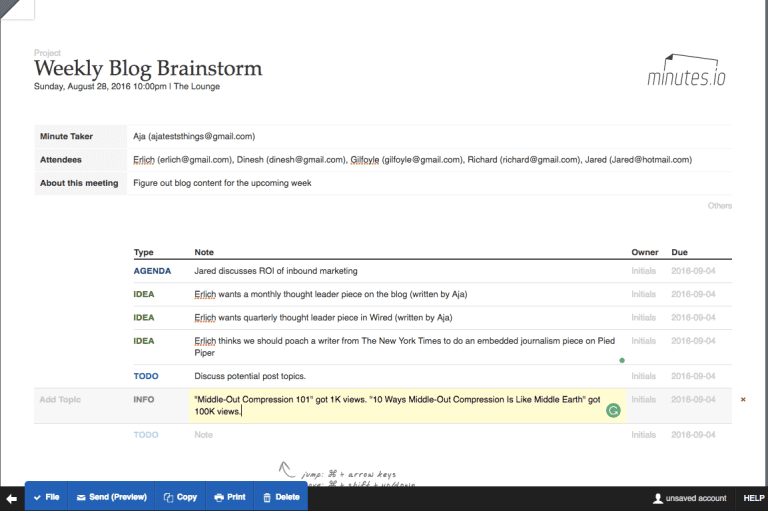
Source: Minutes.io
Taking meeting minutes can be a rather dreary task for anyone who does it. Minutes.io is explicitly for taking meeting minutes. It gives you a template for writing all the details of what happens during a meeting, like who said what, which promises were made, and what deadlines were decided.
Minutes also lets you use hotkeys so that once you learn them, you won’t have to lift your fingers while typing. It runs in a browser and operates both online and offline. At the close of a meeting, you can easily add people’s email addresses to the file to share it with all the attendees.
When all of a sudden you’re asked to take official notes for a meeting, the app launches quickly and works really well, giving you a template for the task at hand.
8. Otter for note-taking without taking notes
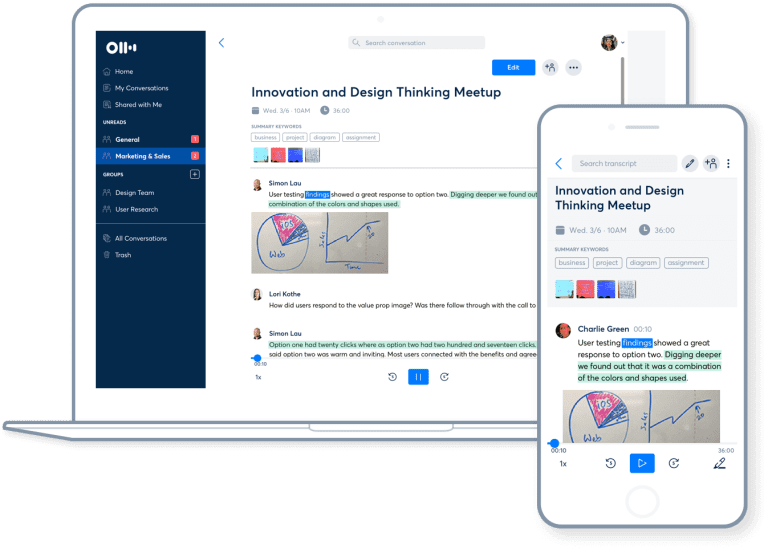
Source: Otter
Note-taking is constant work, and the one who’s doing it can even miss out on most of the actual meeting. Otter is a cross-platform app that records meeting audio, transcribes it automatically, and shares it with the group once the meeting is over. You can easily review the recordings in real-time, edit, and organize them from any device.
What’s really awesome about it is that it even pinpoints key summary words and creates word clouds that you can use to jump around to the discussion highlights of the meeting. The free version lets you record up to 600 minutes each month, and even integrates with Zoom, a popular online videoconferencing tool.
9. Online Notepad for Proactive Note-taking
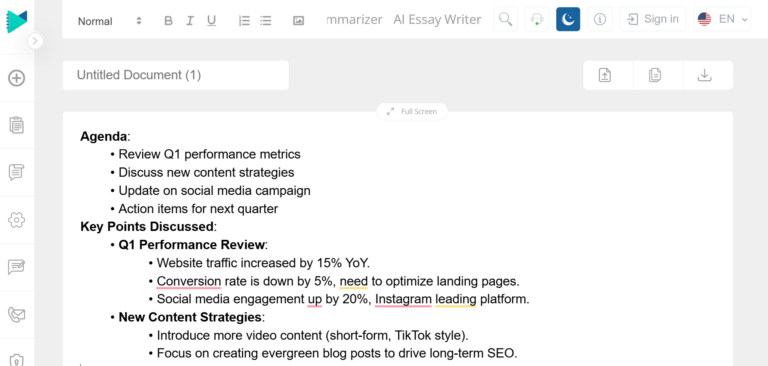
Taking notes during a meeting is crucial, but it can be overwhelming without the right tool. In this regard, the Online Notepad is a simple yet powerful solution that allows real-time note-taking without distractions. Whether you’re jotting down key discussion points or action items, this tool will make it easy to organize your notes efficiently.
The best part is that it works directly in your browser with no downloads required. So, you can save meeting records on the cloud with total convenience.
10. Google Docs & Meet for integrated note-taking
When it comes to effective meetings and essential tools for effective meetings no list could be complete without Google Meet paired with Google Docs. If you’ve never used it, you’re bound to fall in love with the ease of use and seamless workflow that characterizes it. While it may lack some nifty features of similar services, it’s perfect in its pure simplicity.
This collaborative word processor is one of the best tools available to jointly take meeting notes, add images, links, files, and comments, and watch the document update in real time. And although a lot of people use Google Docs, not everyone knows that it makes note-taking so much more effective when using their fully editable templates.
The best thing about it besides that it’s free to use is probably its easy sharing features, which allow sending the document to meeting attendees even outside your organization and invite them to collaborate without requiring any learning curve whatsoever.
11. Zapier for automating your meeting routines
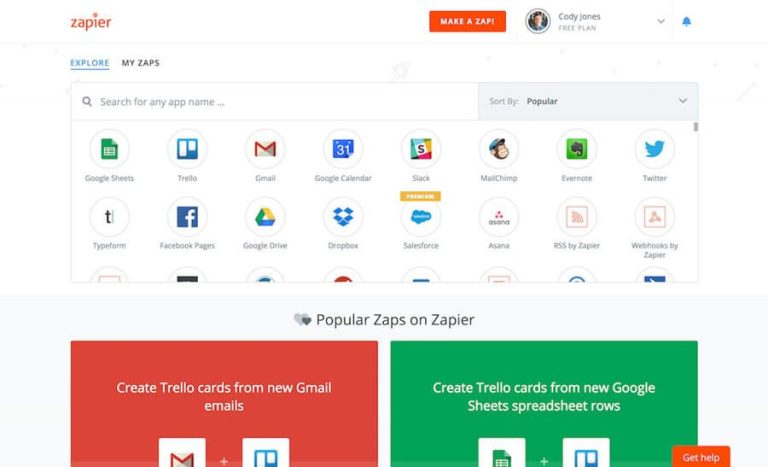
Source: Zapier
You probably already use a lot of services, and you probably will have even more of them after this article, which means it’ll be even easier to get lost. But Zapier is something else – this is the must-have app for connecting all your other apps and services, meaning you can now automate workflows and routine tasks.
For example you can set it up to trigger a new Google Docs or an Evernote document, or a Miro board at the start of the meeting. Or set it up to send out an automated email to Google Calendar event attendees. If you get an email prior to a meeting in Gmail with an agenda attached, Zapier can copy the attachment from that email to your Trello board while immediately alerting you in, say, Slack.
What’s really awesome about it is that it connects to the software of your Luxafor devices as well, meaning that you can notify yourself and others with a custom LED signal whenever automation is triggered or complete, leaving you with extra time and a smoother workflow of a meeting.
Tips and Methods for Productive Meetings
Having a bunch of tools at your disposal doesn’t guarantee 100% success unless you use them intentionally. In order to conduct a quality meeting, one that really helps gather a consensus, make a key decision and find solutions to issues, there are some things to take into account.
Here are some key strategies, methods, and simple tips and tricks for leading effective and productive meetings:
1. Establish the meeting’s goal and purpose
While this might appear obvious, still lots of meetings start without a clear sense of purpose. Stating the main meeting’s goal and purpose in an agenda or as the meeting begins, helps to move the meeting in the desired direction. This gives participants a script or a compass that they can follow and return to if they digress.
Besides, a good practice is allocating specific timeframes for each topic – this ensures that the meeting stays on track. Whenever the conversation wanders, the moderator should move it back onto the right path.
2. Encourage open discussions among participants
Most meetings are ineffective because conversations are one-sided. Everyone, apart from those with something to contribute or those who are eager to be heard, should contribute to reaching the goal of the meeting. One way of achieving maximum participation is by having agenda items assigned to participants.
3. Focus on the meeting and eliminate distractions
This not only refers to sticking to agenda items but also to other distractions such as phones or personal computers. The moderator should ask participants to switch off their mobile phones or any other devices so that they are fully present. Most meetings are ineffective, long, and tedious because in most cases, participants are too busy multitasking rather than paying attention to the issues being discussed.
4. End the meeting with an action plan
In most cases, at the end of the meeting, participants have no idea what to do other than wait for the next meeting. A rule of thumb for an effective meeting is that the chairperson goes over what has been discussed, what the conclusions are, and what is expected of the participants.
It’s even better if you summarize this all in one document, so this is the right time to start using one of the aforementioned note-taking apps wisely. A Zapier trigger might also come in handy if you want to automatically send out the document you edited during the meeting.
5. Keep the discussions focused
Failing to respect the time limits is a typical flaw of many meetings. If you don’t want to waste time on lengthy intros and debates, it’s very important to keep an eye on the clock to make all the items on the agenda well-timed.
However, what to do when your team is brainstorming and generating creative ideas? Would time constraints suppress the creative flow or enhance it?
Try applying the Pomodoro technique for the items on the agenda. The Pomodoro technique is basically a time-management method that breaks down tasks into intervals of work (e.g. 25 minutes) and breaks (e.g. 5 minutes). Science says that a regular work-break pattern helps you focus better, so Pomodoro is a good solution for that.
Since most meetings are energy-draining, it’s a great idea to pack a discussion or a brainstorming session for, let’s say, 15 minutes, take a 3-minute mini-break, and then repeat the cycle for as much as you need. The pauses and time constraints will help everyone rewind and keep the creative ideas coming.
How to use it practically? The most effective way of using the Pomodoro for meetings is having a physical timer that everyone can see. The Luxafor Pomodoro Timer is boldly visual, and it also serves as a perfect LED reminder of how you’re using your time together. The software that comes with it is very easy to use and allows you to set up the length of your work session (Pomodoro), short breaks, and long breaks. The colors and patterns are easily customizable to provide flashy visual cues for whenever a session starts or ends.
Some final words
Yes, meetings are and have always been a complicated corporate routine that doesn’t always end in success. However, while many new-age communication forms are taking over the workplaces of today, meetings can’t really be removed from company operations. Rather, it’s up to you to change the way you and your team approach meetings.
Now that you know what strategies and tools you can use to make your meetings more productive and really cost-efficient, it’s time to transform the meetings into a time well spent. We really hope you found this list of tools and tips and tricks useful, and you’ll start changing your future meetings for the better one step at a time!
Do you want to build and maintain new habits? Get your free PDF version of the Don't Break The Chain calendar and start today!
Do you want to build and maintain new habits? Get your free PDF version of the Don't Break The Chain calendar and start today!
Author

Martins Z.
Enthusiastic writer with an interest for all things related to productivity, tech, communication, and personal improvement.



